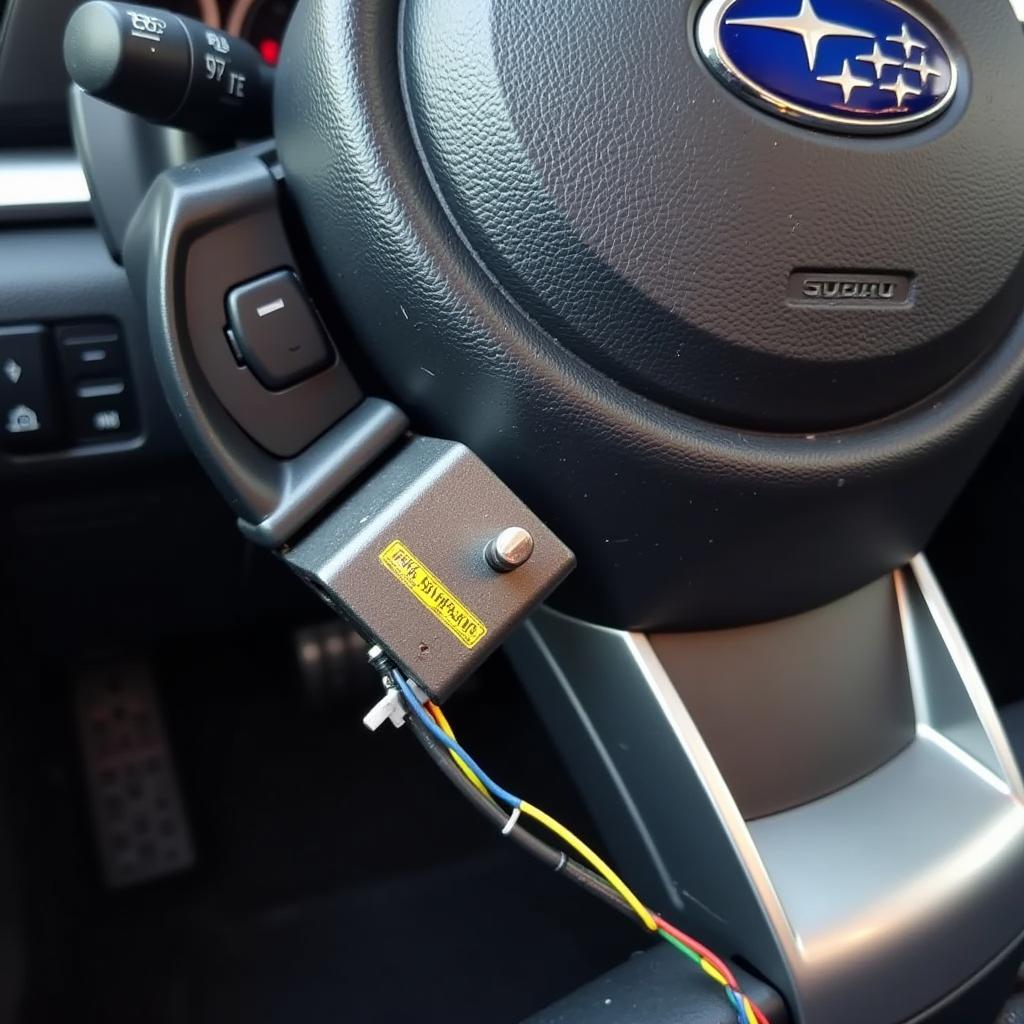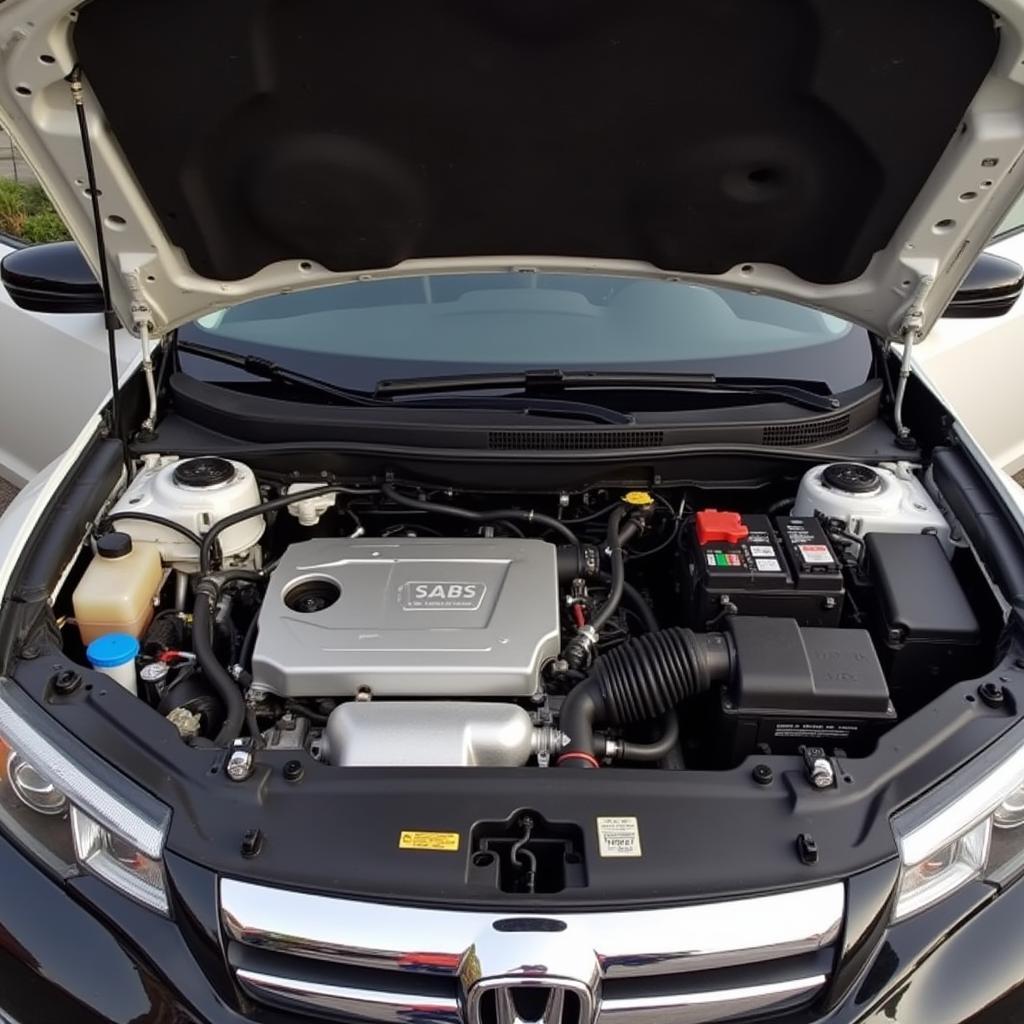Imagine cruising down the road in your Subaru, enjoying the scenery, when suddenly, a persistent chime begins. You glance at the passenger seat, but there’s nothing there. The infuriating “phantom passenger” seatbelt warning has reared its head. This common issue can stem from various causes, ranging from a simple glitch to a faulty sensor. This comprehensive guide dives deep into the problem, exploring its potential causes and offering practical solutions.
What Triggers the Passenger Seatbelt Warning in Your Subaru?
Your Subaru utilizes a sophisticated system to detect the presence of a passenger and activate the seatbelt warning if necessary. Here’s how it works:
- Seat Weight Sensor: A sensor beneath the passenger seat cushion detects pressure. When weight is applied (indicating a passenger), the sensor signals the car’s computer.
- Buckle Sensor: A sensor in the seatbelt buckle detects if it’s fastened. When the buckle is engaged, it sends a signal to the car’s computer, confirming a belted passenger.
- Control Module: The car’s computer receives signals from both sensors. If the weight sensor detects pressure without a corresponding signal from the buckle sensor, it triggers the warning chime and dashboard light.
Common Causes of a False Passenger Seatbelt Warning in Subaru Vehicles
A malfunctioning component within this system can lead to a false positive, causing the warning to activate even with an empty seat. Here are the most common culprits:
- Faulty Seat Weight Sensor: This is the most common cause. Over time, the sensor can wear down, become misaligned, or get damaged, leading to inaccurate readings.
- Seatbelt Buckle Issue: A problem with the buckle sensor itself or the wiring harness connected to it can disrupt the signal, causing the car to think the seatbelt isn’t fastened.
- Software Glitch: Occasionally, a temporary glitch in the car’s software can trigger false warnings. This is often resolved with a simple reset.
- Electrical Problems: Issues like corroded wiring, loose connections, or a short circuit can interfere with the sensor signals, leading to a malfunctioning system.
 Faulty Seat Weight Sensor
Faulty Seat Weight Sensor
Troubleshooting the Subaru Passenger Seatbelt Warning
Before heading to a mechanic, you can try a few troubleshooting steps at home:
- The Simple Reset: Start by trying a simple reset. Disconnect the negative terminal of your car battery for 15 minutes, then reconnect it. This can often clear minor software glitches.
- Check the Buckle: Ensure the passenger seatbelt buckle is clean and fully inserted. Any debris or slight misalignment can trigger the sensor.
- Inspect the Seat: Check for any visible damage to the seat or the area around the sensor. Look for loose wires, foreign objects, or signs of liquid spills.
- Test the Weight Sensor (Caution: Requires Technical Expertise): With the car off, locate the sensor under the seat (consult your owner’s manual). Gently press and release the sensor while observing the dashboard warning light. If it doesn’t illuminate or flickers erratically, the sensor may be faulty.
When to Consult a Professional
If troubleshooting fails to resolve the issue, it’s time to seek professional help. A qualified Subaru technician or automotive electrician can accurately diagnose the problem using specialized diagnostic tools. They can then recommend the appropriate solution, which may involve:
- Sensor Replacement: A faulty weight or buckle sensor will likely require replacement.
- Wiring Repair/Replacement: Any damaged or corroded wiring will need to be repaired or replaced to ensure proper signal transmission.
- Software Update: In some cases, a software update from the manufacturer may be necessary to address known glitches.
The Importance of Addressing the Issue Promptly
While a chiming seatbelt warning may seem like a minor annoyance, ignoring it can have significant consequences:
- Safety System Malfunction: A malfunctioning sensor could indicate broader problems with your car’s safety restraint system, putting you and your passengers at risk.
- Distraction: The constant chime and flashing light can be distracting, potentially leading to an accident.
- Resale Value: An unresolved warning light can affect your car’s resale value, as potential buyers may be wary of potential electrical or safety issues.
Preventative Measures for a Quieter Ride
Once the issue is resolved, here are some tips to prevent future occurrences:
- Regular Cleaning: Keep the passenger seat and seatbelt buckle free of debris and spills.
- Gentle Handling: Avoid placing heavy objects on the passenger seat, which can strain the weight sensor.
- Scheduled Maintenance: Follow your Subaru’s recommended maintenance schedule, which includes inspections of the seatbelt system and other electrical components.
 Subaru Diagnostic Tool
Subaru Diagnostic Tool
Expert Insights
“The passenger seatbelt warning is a critical safety feature, but it can be frustrating when triggered falsely,” says Sarah Jones, a certified Subaru mechanic with over 15 years of experience. “Ignoring the issue is never the answer. A simple inspection and timely repair can ensure the system functions as intended, keeping you and your passengers safe on the road.”
Conclusion
The phantom passenger seatbelt chime in your Subaru is more than just an annoyance; it’s a sign that something needs attention. By understanding the common causes and following the troubleshooting steps outlined above, you can get to the root of the problem and enjoy a quieter, safer ride. If you’re unsure about any aspect of the repair, consult a qualified professional for assistance. Your Subaru’s safety and your peace of mind are worth it.


